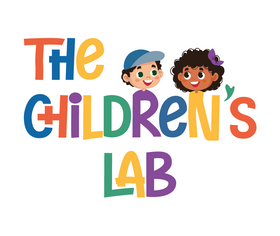
10 Powerful Ways Clay Dough Art Helps in Child Development
10 Powerful Ways Clay Dough Art Helps in Child Development
Clay dough art is more than just a fun, messy activity for children; it’s a powerhouse for developing key skills that lay the foundation for cognitive, motor, and emotional growth. Whether you call it clay dough, play with clay, or simply kids playing with clay, this creative activity packs a punch in enhancing your child’s development in multiple ways.
At The Children’s Lab, we know how impactful sensory play activities like clay dough art can be. Let’s explore the top 10 powerful ways this art form helps in child development.
1. Enhances Fine Motor Skills
Children playing with clay is a great way to strengthen their fine motor skills. Molding, squishing, rolling, and pinching the clay helps develop the small hand muscles that are essential for activities like writing, buttoning shirts, and using utensils. The act of shaping the clay improves hand-eye coordination, ensuring children’s hands become more agile and precise over time.
2. Boosts Creativity and Imagination
One of the most obvious benefits of clay dough art is that it sparks creativity. When kids play with clay, there are endless possibilities. From creating animals to abstract shapes, this open-ended activity allows children to express their thoughts, ideas, and imaginations without restrictions. This boosts their problem-solving skills and encourages original thinking, which is vital in their cognitive development.
3. Supports Cognitive Growth
Creating clay dough art encourages children to think critically. They learn how different shapes can be made by combining smaller parts and how altering the texture or color of the clay changes its properties. This kind of sensory play for preschoolers stimulates brain development, improving memory, pattern recognition, and decision-making skills.
4. Improves Hand-Eye Coordination
Working with clay encourages children playing with clay to plan, coordinate, and execute tasks. They learn how to use their eyes and hands together in a focused, deliberate manner. Whether they are rolling the dough into a ball or shaping it into a figure, this act of manipulating clay improves their hand-eye coordination.
5. Encourages Focus and Concentration
Sitting down to play with clay helps children focus for extended periods of time. As they engage with the texture and shape the dough into different forms, their attention span improves. This sustained focus is essential in other areas of life, from academic settings to daily tasks.
6. Develops Social Skills
When children play with clay in a group or with siblings, it’s a perfect opportunity for sensory play activities that encourage sharing, turn-taking, and collaboration. Children learn how to work together to create larger projects and discuss ideas, all while improving their social and communication skills. It’s also a fun bonding activity for families.
7. Fosters Emotional Expression
Clay dough art is an excellent way for children to express their emotions. If they’re feeling anxious or stressed, the tactile nature of clay provides a calming outlet. The physical process of kneading, rolling, and shaping allows kids to channel their feelings into something creative and constructive.
8. Teaches Patience and Perseverance
Creating clay dough art isn’t always about making perfect figures. Children learn that it takes time to mold, shape, and perfect their creations. This helps them develop patience as they see their projects unfold. In case something doesn’t work out the first time, they also learn to try again, cultivating resilience.
9. Stimulates Senses for Better Learning
Sensory play activities, like playing with clay dough, engage multiple senses simultaneously: touch, sight, and sometimes even smell. Children explore the squishy, soft texture of the clay, the vibrant colors, and the smoothness of their creations. This sensory stimulation aids in better learning and retention by making concepts more memorable and tangible.
10. Improves Spatial Awareness
When kids play with clay, they start understanding space and proportion. They figure out how much space their shapes take up and how to make objects fit together. This improves their understanding of spatial relationships, which is essential for later learning in mathematics and geometry.
Conclusion
There’s no doubt that clay dough art offers endless developmental benefits for children. From improving fine motor skills to fostering creativity and social interactions, kids playing with clay experience learning on multiple levels. Sensory play for preschoolers with clay is not just fun — it’s an educational tool that helps shape young minds.
At The Children’s Lab, we encourage parents and caregivers to incorporate clay dough activities into daily routines to boost creativity, learning, and emotional growth. So next time you see your little one rolling, pinching, and squishing their clay creations, know that they are building essential skills that will last a lifetime.
